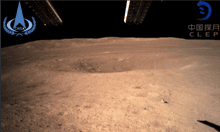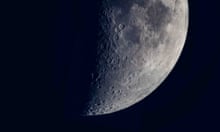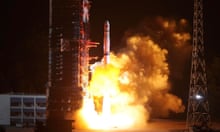China will launch a mission to land on the dark side of the moon in two years’ time, state media has reported, in what will be a first for humanity.
The moon’s far hemisphere is never directly visible from Earth and while it has been photographed, with the first images appearing in 1959, it has never been explored.
China’s Chang’e-4 probe – named after the goddess of the moon in Chinese mythology – will be sent up in 2018, the official Xinhua news agency reported.
“The Chang’e-4’s lander and rover will make a soft landing on the back side of the moon, and will carry out in-place and patrolling surveys,” the country’s lunar exploration chief, Liu Jizhong, said on Thursday.
Beijing sees its military-run, multibillion-dollar space programme as a marker of its rising global stature and mounting technical expertise, as well as evidence of the ruling Communist party’s success in transforming the once poverty-stricken nation.
But so far it has mostly replicated activities that the US and Russia pioneered decades ago.
“The implementation of the Chang’e-4 mission has helped our country make the leap from following to leading in the field of lunar exploration,” Liu said.
In 2013, China landed a rover dubbed Yutu on the moon and the following year an unmanned probe completed its first return mission.
Beijing has plans for a permanent orbiting station by 2020 and aims to eventually send a person to the moon.
Space flight is “an important manifestation of overall national strength”, Xinhua cited the science official Qian Yan as saying, adding that every success had “greatly stimulated the public’s … pride in the achievements of the motherland’s development.”
Clive Neal, the chair of the Lunar Exploration Analysis Group affiliated with NASA, confirmed that the Chang’e-4 mission was unprecedented.
“There has been no surface exploration of the far side,” he said.
It is “very different to the near side because of the biggest hole in the solar system – the South Pole-Aitken basin, which may have exposed mantle materials – and the thicker lunar crust.”
The basin is the largest known impact crater in the solar system, nearly 2,500km wide and 13km deep.
“I am sure the international lunar science community will be very excited about this mission,” he said. “I know I am.”








